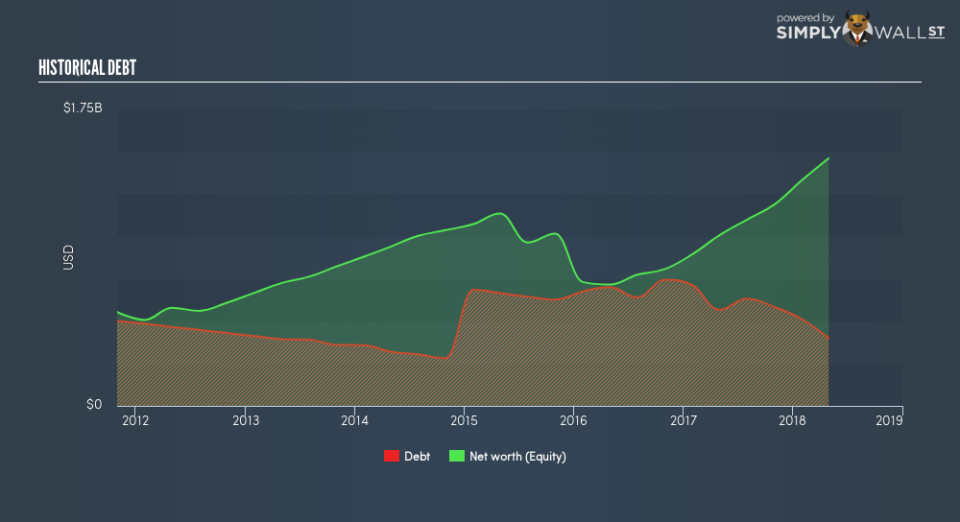Why Copart Inc (NASDAQ:CPRT) Is A Financially Healthy Company

With a market capitalization of US$14.57b, Copart Inc (NASDAQ:CPRT) is a large-cap stock, which is considered by most investors as a safe bet. Common characteristics for these big stocks are their strong balance sheet and high liquidity, which means there’s plenty of stocks available to the public for trading. These companies are resilient in times of low liquidity and are relatively unimpacted by interest rate hikes. Today I will analyse the latest financial data for CPRT to determine is solvency and liquidity and whether the stock is a sound investment.
See our latest analysis for Copart
How much cash does CPRT generate through its operations?
CPRT has shrunken its total debt levels in the last twelve months, from US$566.9m to US$400.1m , which comprises of short- and long-term debt. With this debt payback, the current cash and short-term investment levels stands at US$204.3m for investing into the business. Additionally, CPRT has produced US$521.4m in operating cash flow during the same period of time, resulting in an operating cash to total debt ratio of 130%, signalling that CPRT’s operating cash is sufficient to cover its debt. This ratio can also be a sign of operational efficiency as an alternative to return on assets. In CPRT’s case, it is able to generate 1.3x cash from its debt capital.
Can CPRT pay its short-term liabilities?
With current liabilities at US$270.6m, it appears that the company has maintained a safe level of current assets to meet its obligations, with the current ratio last standing at 2.33x. Usually, for Commercial Services companies, this is a suitable ratio since there is a bit of a cash buffer without leaving too much capital in a low-return environment.
Does CPRT face the risk of succumbing to its debt-load?
With a debt-to-equity ratio of 27.4%, CPRT’s debt level may be seen as prudent. CPRT is not taking on too much debt commitment, which may be constraining for future growth. We can test if CPRT’s debt levels are sustainable by measuring interest payments against earnings of a company. As a rule of thumb, a company should have earnings before interest and tax (EBIT) of at least three times the size of net interest. In CPRT’s case, the ratio of 31.6x suggests that interest is amply covered. High interest coverage serves as an indication of the safety of a company, which highlights why many large organisations like CPRT are considered a risk-averse investment.
Next Steps:
CPRT’s debt level is appropriate for a company its size, and it is also able to generate sufficient cash flow coverage, meaning it has been able to put its debt in good use. In addition to this, the company exhibits proper management of current assets and upcoming liabilities. I admit this is a fairly basic analysis for CPRT’s financial health. Other important fundamentals need to be considered alongside. You should continue to research Copart to get a more holistic view of the stock by looking at:
Future Outlook: What are well-informed industry analysts predicting for CPRT’s future growth? Take a look at our free research report of analyst consensus for CPRT’s outlook.
Valuation: What is CPRT worth today? Is the stock undervalued, even when its growth outlook is factored into its intrinsic value? The intrinsic value infographic in our free research report helps visualize whether CPRT is currently mispriced by the market.
Other High-Performing Stocks: Are there other stocks that provide better prospects with proven track records? Explore our free list of these great stocks here.
To help readers see past the short term volatility of the financial market, we aim to bring you a long-term focused research analysis purely driven by fundamental data. Note that our analysis does not factor in the latest price-sensitive company announcements.
The author is an independent contributor and at the time of publication had no position in the stocks mentioned. For errors that warrant correction please contact the editor at editorial-team@simplywallst.com.

 Yahoo Finance
Yahoo Finance 
